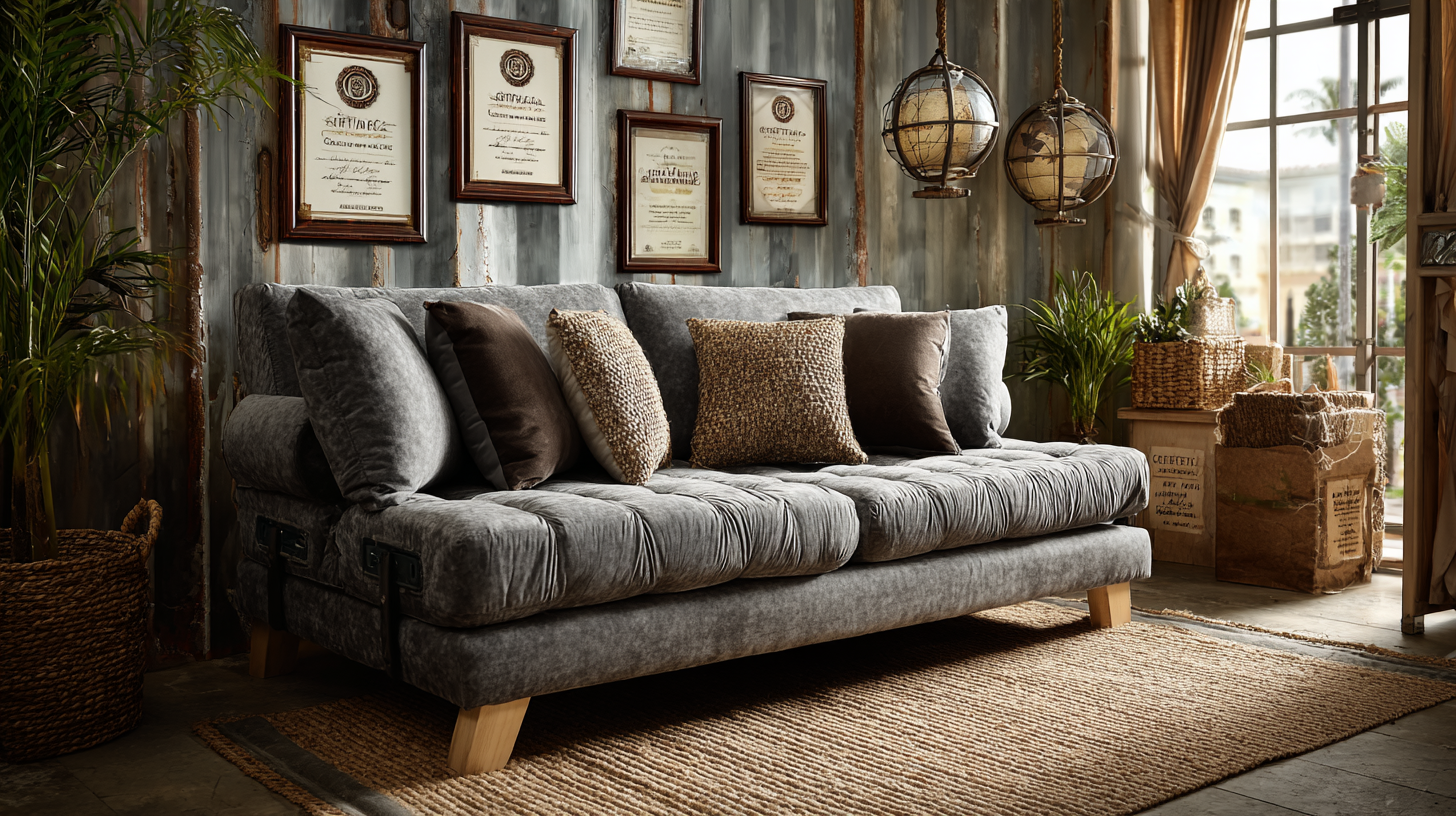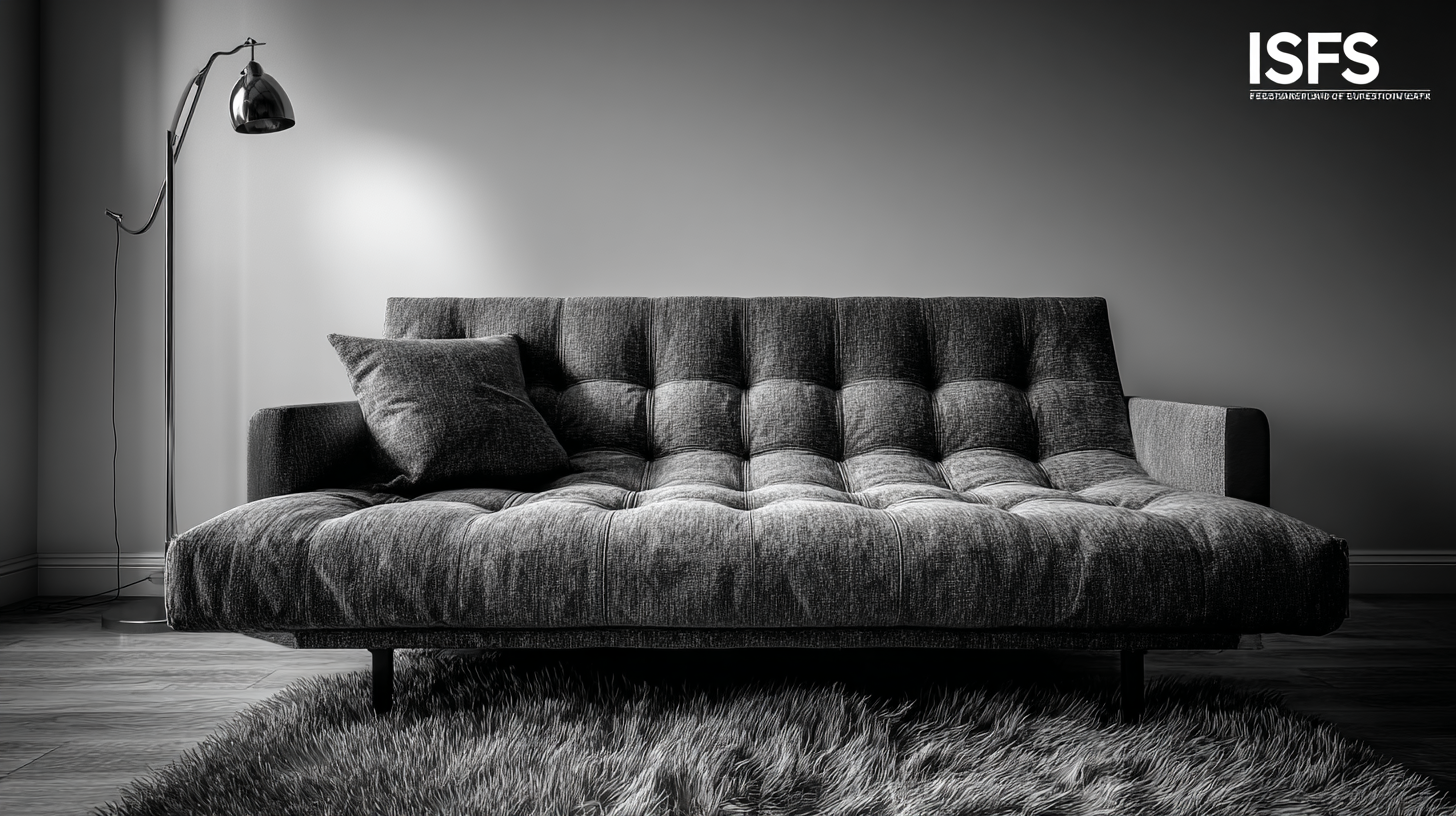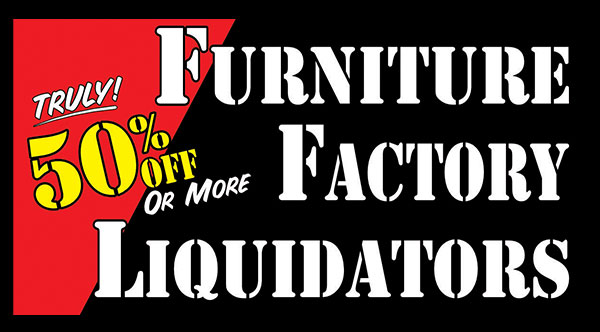Navigating Export Certifications for the Best Sleeper Sofa in Today's Global Market
In today's global market, choosing the right manufacturer for a sleeper sofa is crucial, not only for ensuring quality and comfort but also for navigating the complexities of export certifications. As the demand for versatile and space-saving furniture rises, understanding the various certifications that accompany these products becomes essential for consumers and retailers alike. A well-crafted sleeper sofa can transform any living space, but without proper guidance on selecting a reputable manufacturer, buyers may face issues related to durability, safety, and compliance with international standards. This blog aims to illuminate the factors to consider when evaluating potential manufacturers, highlighting the importance of export certifications and their impact on the overall value of the sleeper sofa you choose. Join us as we explore the essential steps to make an informed decision in this competitive marketplace.

Emerging Trends in the Global Sleeper Sofa Market Heading into 2025
As we move towards 2025, the global sleeper sofa market is poised for remarkable growth, echoing broader trends seen in the luxury furniture sector. While the global luxury furniture market is set to reach USD 41.95 billion, factors like urbanization, real estate expansion, and smart home integration are driving consumers towards multifunctional furniture solutions, including sleeper sofas. This furniture segment, which combines style and practicality, is gaining traction as more individuals seek to maximize their living space without compromising on aesthetics.
To choose the best sleeper sofa, consider the following tips: First, assess the size and layout of your room to ensure the couch fits seamlessly. Second, prioritize quality materials; robust construction and durable upholstery can enhance longevity, reflecting trends towards sustainability. Lastly, evaluate the mechanism—easy-to-use opening systems make for a hassle-free transformation from sofa to bed, catering to the needs of today’s dynamic living environments.
Additionally, as TikTok and other social media platforms play pivotal roles in influencing home decor trends, keep an eye out for viral sleeper sofa styles that may appeal to your personal aesthetic. With the right choices, a sleeper sofa can truly elevate your space while serving both functional and design purposes.
Key Export Certifications Required for Sleeper Sofa Manufacturers
When it comes to exporting sleeper sofas in today's competitive global market, understanding the necessary export certifications is crucial for manufacturers. These certifications not only ensure compliance with international safety and quality standards but also enhance marketability to potential buyers. Key certifications often include the International Organization for Standardization (ISO) standards, which outline requirements for quality management systems, and the American Society for Testing and Materials (ASTM) standards, which provide guidelines on safety and performance.
Tip: Start by researching the specific export certifications required in your target export markets. Different countries may have varying standards, so aligning your products with local regulations can save time and resources in the long run.
Additionally, consider obtaining eco-label certifications, which emphasize sustainable manufacturing practices. These certifications can attract environmentally conscious consumers and provide a competitive edge in the marketplace.
Tip: Collaborate with certification agencies to ensure your sleeper sofas meet the required standards, as this partnership can streamline the certification process and provide valuable insights into industry practices.
Navigating Export Certifications for the Best Sleeper Sofa in Today's Global Market
| Certification | Description | Issuing Authority | Region | Validity |
|---|---|---|---|---|
| ISO 9001 | Quality management system certification | International Organization for Standardization | Global | 3 years |
| CARB Phase 2 | Compliance with formaldehyde emission standards | California Air Resources Board | USA | Ongoing compliance |
| ASTM E84 | Standard test method for surface burning characteristics of building materials | ASTM International | Global | Annual re-evaluation |
| GREENGUARD | Certification for low chemical emissions for indoor air quality | UL Environment | Global | 5 years |
| UL 941 | Standards for upholstered furniture testing | Underwriters Laboratories | USA | Ongoing compliance |
Impact of Trade Regulations on Sleeper Sofa Exports and Imports
Trade regulations significantly impact the export and import of
sleeper sofas, affecting manufacturers, retailers, and consumers alike.
Policies such as tariffs and quotas
can alter the pricing and availability of these popular furniture items in various markets. For instance, when
a country imposes high tariffs on imported sofas, local manufacturers may benefit from reduced competition,
while consumers may face higher prices and fewer choices.
Additionally, evolving trade agreements can create new opportunities or challenges, encouraging exporters to stay
informed and agile in their strategies.
Moreover, adherence to export certifications has become crucial for companies involved in the sleeper sofa market.
These certifications not only ensure compliance with safety and quality standards but also facilitate smoother
transactions across borders. As consumers increasingly prioritize eco-friendly
and ethically produced furniture, companies must navigate a complex
landscape of regulations to meet market demands. Understanding these intricacies enables businesses to enhance their
global competitiveness and effectively engage with diverse markets while addressing the implications of trade
regulations on their operations.
Market Demand Analysis: Consumer Preferences for Sleeper Sofas
In today's global market, consumer preferences for sleeper sofas are influenced by various factors, including functionality, design, and sustainability. Recent market demand analyses reveal that buyers are increasingly seeking versatile furniture that fits seamlessly into their modern lifestyles. The appeal of sleeper sofas lies in their dual function, allowing consumers to maximize space in smaller living areas, making them a popular choice for urban dwellers. Additionally, the aesthetic aspect cannot be overlooked; contemporary designs that marry comfort with style are becoming essential to meet customer expectations.

Sustainability is another major consideration in consumer purchasing decisions. Shoppers are more conscious of the environmental impact of their furniture choices, leading them to prefer sleeper sofas made from eco-friendly materials and produced through sustainable practices. This shift is pushing manufacturers to adopt greener production methods while highlighting the longevity and durability of their products. As such, brands that prioritize sustainability and transparency in their supply chains are likely to gain a competitive edge in this evolving market.
Future Growth Projections for Sleeper Sofa Industry Exports by 2025
The sleeper sofa industry is poised for significant growth in the coming years, with projected export values expected to reach $2.5 billion by 2025. According to a recent report by MarketWatch, the global market for sleeper sofas is anticipated to expand at a compound annual growth rate (CAGR) of 4.8% from 2021 to 2025. This growth can be attributed to rising demand for multifunctional furniture in urban areas where space is often limited, driving consumers to seek out versatile solutions.

Furthermore, the North American market remains a key player in driving exports, contributing to nearly 40% of the global sleeper sofa sales. The increasing trend of remote work environments has led to a surge in demand for home office furniture, including sleeper sofas which can serve dual purposes. Additionally, the Asian market is emerging as a significant player, with countries like China projected to increase their production capacities. As manufacturers adapt to these trends, understanding export certifications and compliance will be essential for tapping into these lucrative markets effectively.

